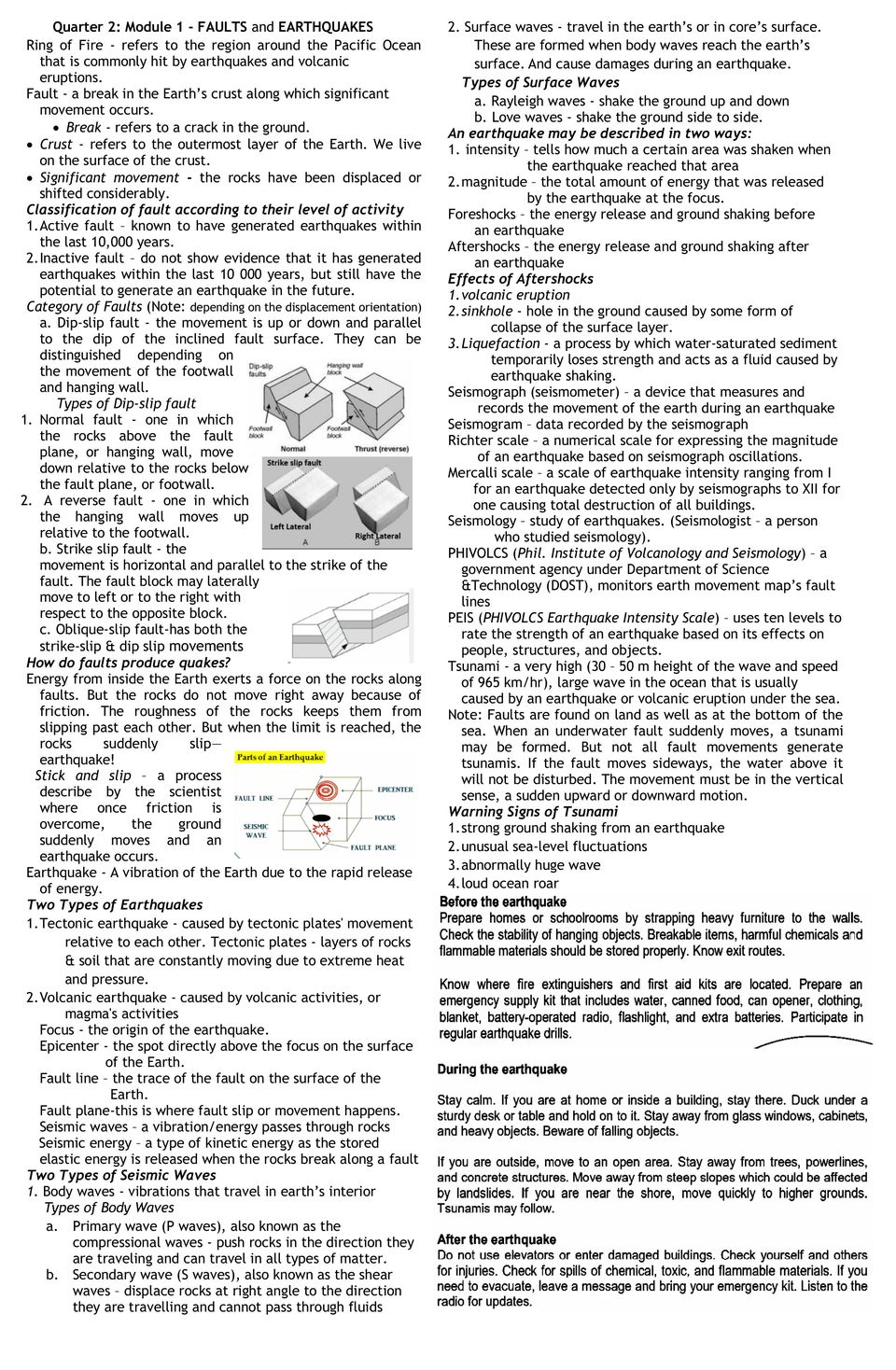What are the different types of faults and how do they cause earthquakes? What are the types of seismic waves? What safety measures should be taken during and after an earthquake?

Understand the Problem
The question covers various aspects of faults and earthquakes, including the types of faults, how energy from within the Earth causes earthquakes, types of seismic waves, and safety measures before, during, and after an earthquake. It outlines essential concepts fundamental to understanding seismic activity and related safety protocols.
Answer
Fault types: normal, reverse, strike-slip. Waves: P, S, Love, Rayleigh. Safety: duck, cover, hold; avoid damage, check for injuries.
Earthquakes are caused by movement along faults: normal, reverse, and strike-slip. Seismic waves include body waves (P and S) and surface waves (Love and Rayleigh). Safety measures during an earthquake: duck, cover, hold; after: avoid damaged buildings, check for injuries, and follow emergency alerts.
Answer for screen readers
Earthquakes are caused by movement along faults: normal, reverse, and strike-slip. Seismic waves include body waves (P and S) and surface waves (Love and Rayleigh). Safety measures during an earthquake: duck, cover, hold; after: avoid damaged buildings, check for injuries, and follow emergency alerts.
More Information
Earthquakes result from the movement of tectonic plates along faults, which releases energy as seismic waves. The understanding of these factors helps in assessing risks and improving safety measures.
Tips
A common mistake is not preparing an emergency kit or having a plan in place before an earthquake. Ensuring proper preparedness can significantly reduce risk.
Sources
AI-generated content may contain errors. Please verify critical information